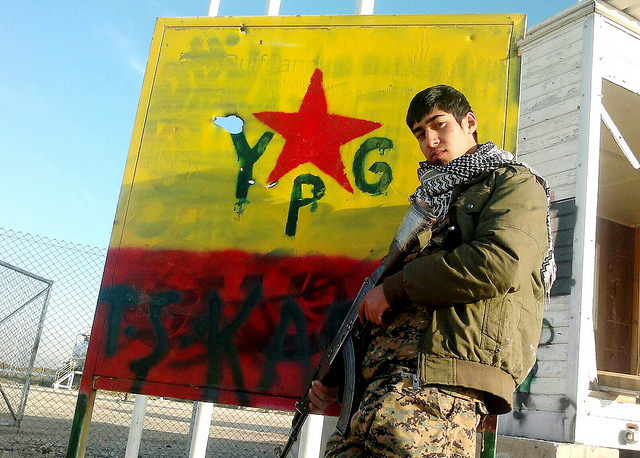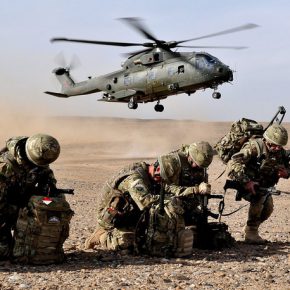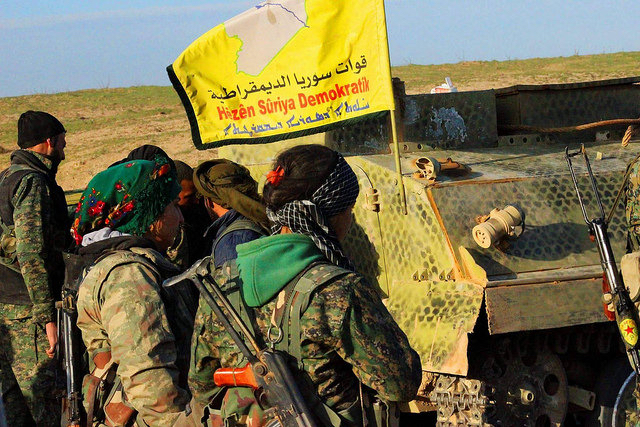Experts in Syria Deeply’s community comment on the important developments taking shape in Syria while the world has been focused on the U.S. strike and the chemical attack.
The chemical attack in Idlib and the retaliatory U.S. strike on a Syrian government air base monopolized media coverage of the Syrian conflict in recent weeks. However, as the majority of headlines focused on the strike’s potential impact, and the regime’s alleged use of chemical weapons, many other important developments were unfolding on the ground in Syria.
Syria Deeply spoke to experts monitoring these situations, including the recent reconciliation deals and displacements in rebel-controlled areas, the tensions between Syrian opposition groups and the changing geopolitical landscape of the conflict.
Aymenn Jawad al-Tamimi, Jihad-Intel research fellow at the Middle East Forum: One of the important developments we haven’t been hearing so much about is how “reconciliations” (musalahat) play out on the ground. These are increasingly important to watch, in my view, as the regime continues to regain ground. It is simply impossible to depopulate every rebel-held town, or bus the undesirable elements to the north. The regime’s approach has to be multifaceted and vary according to circumstances.
Thus, in north Daraa province, I have been watching how one of these reconciliations in a town called Sanamayn has meant that the rebel factions in the town basically remain as they are – just officially unaffiliated with the opposition now and working with the regime to maintain security in the town, while the regime provides state services to the population. Will the regime consider Sanamayn a model for the rest of the south? Could it apply such ideas as it tries to push into Idlib province?
Another important development is the internal tensions between rebel factions in the Euphrates Shield pocket of north Aleppo province: Though there are dozens of factions within Euphrates Shield, only a few factions stand out as the most important players, such as the Shami Front, Ahrar al-Sham, Faylaq al-Sham. There are widespread accusations of criminal behavior and corruption particularly directed at the Shami Front, as it seems to have strong business assets by virtue of a monopoly over the Bab al-Salama border crossing. This has led to challenges against it from smaller, newer players such as the forces of Alp Arslan.
https://www.youtube.com/watch?v=T8Le3BRmF44
Sophie Spencer, research associate at The Syria Institute (TSI): It’s remarkable what has happened in the past month in Syria that hasn’t made the headlines. Here are a few developments that stand out. First, the Syrian government’s increased pressure on besieged communities, such as al-Waer in Homs and the communities in Damascus and Eastern Ghouta. A month ago, al-Waer signed a surrender deal with the Syrian government. Since then, ongoing weekly population transfers have moved civilians and fighters to northern Syria. The “Four Towns” (Fou’a, Kefraya, Madaya and Zabadani) have also signed an agreement and population transfers are currently ongoing.
In The Syria Institute’s work on this topic, we don’t use the term “evacuation” for these type of population transfers because – even in this unique case where two sides were swapped – people agree to be deported only under extreme coercion and the threat of continuing violence, and have no real choice but to agree to die. The start of the Four Towns transfers was delayed several times due to logistical challenges. This is the largest population transfer outside of Aleppo. The Syrian government is quite keen on forcing as many of these surrender deals as possible, which leads to the intensified attacks against besieged communities in Damascus and Eastern Ghouta.
Also, over the past month, armed opposition groups launched several offensives around the country in Damascus, Hama, Latakia and Daraa. The timing and apparent coordination of these offensives are strategically important because the Syrian military lacks the manpower to fight on so many fronts at once. The recent chemical attack on Khan Sheikhoun may have been a response to the gains of opposition groups.
Ayham Kamel, director, Middle East & North Africa at Eurasia Group: One of the things that is often ignored right now in the conflict is, not only has it become internationalized, but also, actively in Syria, we’re developing zones of influence by different states. That’s effectively fragmenting the country where the central government or the Assad regime is no longer in charge of governance. That has been the case for a while, but his ability or the ability of any future government to reassert control over the Syrian territories is going to be extremely difficult.
The U.S. is establishing a zone of influence in eastern Syria and it’s very difficult to imagine that, after recapturing or liberating those territories from ISIS, the U.S. is going to simply leave these areas any time quickly. In fact, most of the dynamics would encourage the U.S. to stay there for a while. There’s also no sign of the Turkish forces leaving northern Syria. The same applies in the south where we’re going to see more signals in the next few weeks of efforts to create a power zone. And even in Assad’s area, it’s very difficult to imagine that either Russia or Iran would simply take their forces or redeploy their forces back home.
The situation is very toxic, and it creates a real risk. In the past, the risk of fragmentation or the risk of the country actually splitting up was minimal and negligible if anything. I think today a balkanization of Syria is a more realistic scenario that can emerge over the long term.
I wouldn’t say that, at this stage, either the U.S. or Russia is interested in splitting up the country, but certainly over the long term, if they have forces in these areas and they’re unable to reach a deal or an agreement whereby the minimum requirements of their allies are met, then I think the de facto balance at that point creates a scenario where Syria is effectively split.
This article originally appeared on Syria Deeply, and you can find the original here. For important news about the war in Syria, you can sign up to the Syria Deeply email list. Photograph courtesy of Kurdish Struggle. Published under a Creative Commons license.





